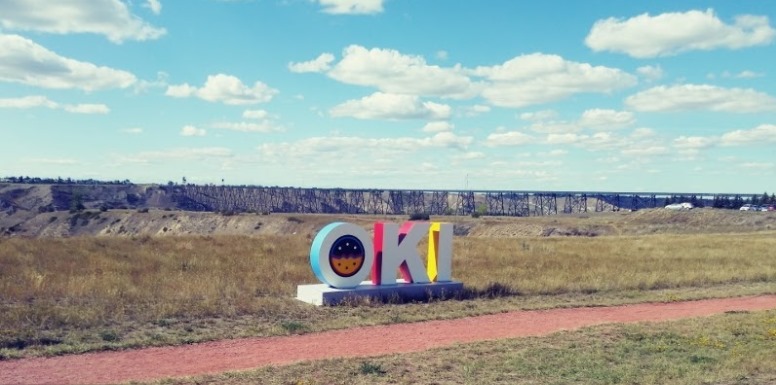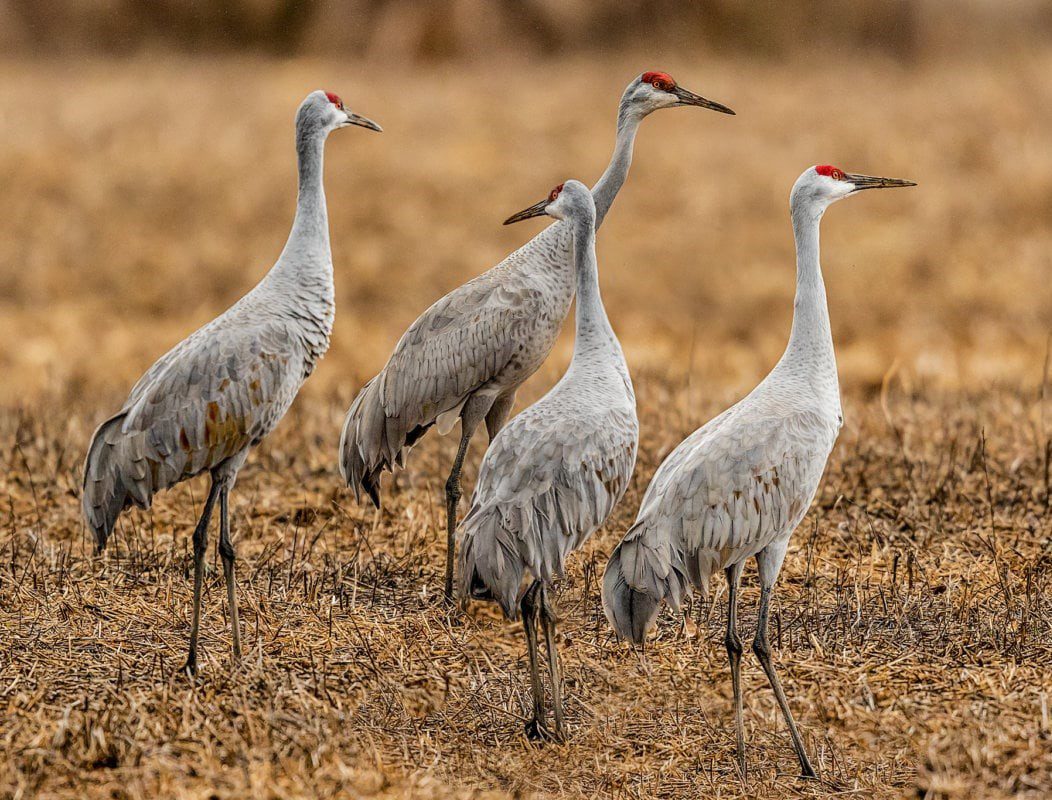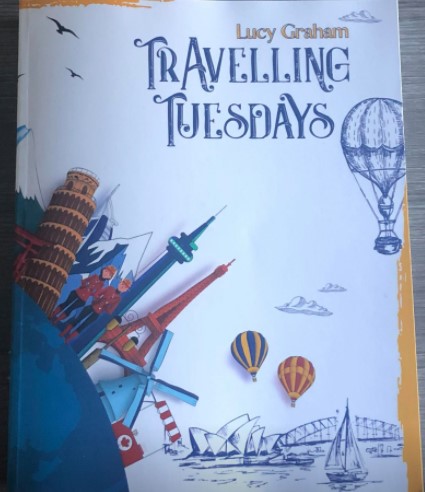Spread Your Wings and Keep Your Head High
Spread Your Wings and Keep Your Head High
Spread Your Wings and Keep Your Head High - Day 425 - Daily Content Challenge
Sandhill Cranes are a species of large cranes of North America and the extreme northeastern part of Siberia.
Sandhill Cranes are very large, tall birds. They have a long neck, long legs and very broad wings. These slate grey birds have a bulky body which tapers into a slender neck. Their head is small and their bill is straight and longer than their head. Their short tail is covered by drooping feathers that form a bustle. [The bustle was fashionable in women’s skirts in Europe and the United States in the 1870’s and 1880’s]
The adults have a pale cheek and red skin on the crown, a grey body and black legs. Juveniles are grey and rusty brown, without the pale cheek or red crown.
Sandhill Cranes breed and forage for grains and invertebrates in open prairies, grasslands and marshes. They do not hunt for food in open water but as dusk approaches, they fly to the river and roost where shallow water covers the sandbars in the middle of channels. They often roost in deeper water of ponds or lakes if it is not breeding season. Here they are safe from predators.
Males are called roans and females are called mares. Baby sandhill cranes are called colts, because of their long legs. Sandhill cranes mate for life and lay two eggs. Both parents take turns sitting on the eggs that incubate for about a month. The colts are able to travel with their parents a day after hatching.
Sandhill cranes migrate in individual family groups and form large flocks on their wintering grounds and during migration. A group of cranes is called a sedge. Each spring more than 500,000 sandhill cranes gather in the Platte River Valley on the edge of Nebraska's Sandhills. That is why they are called Sandhill cranes. The cranes begin arriving at the Platte in mid-February and will spend four to six months here each spring. The Platte is a staging area where the sandhill cranes stop to rest and replenish their energy reserves before continuing on to their nesting grounds in Canada, Alaska, and Siberia.
The majority of the Sandhill Crane population in the world breeds in Canada. This breeding population is thought to number 400,000 to 500,000 birds. In 1979, the Committee on the Status of Endangered Wildlife in Canada designated the sandhill crane as not at risk and its numbers have continued to grow. Sandhill cranes that breed in Canada and the northern part of the US fly south for the winter.
Some populations of sandhill cranes do not migrate. Those that breed in the southern part of the US and the Caribbean stay in the same area all year round. Florida sandhill cranes are a non-migratory species.
It is illegal to feed sandhill cranes because it can create unnecessary conflict between them and humans. These birds will lose their fear of humans and will flock to more populated areas if they grow accustomed to receiving food from people.
Cranes live to be older than most birds. Some reach 20 years of age. Sandhill Cranes, including their eggs and their young, are prey for a number of different animals. They may be killed and eaten by wolves, Bald Eagles, large owls, ravens, coyotes, bears and lynx. Vehicles are also a threat to Sandhill Cranes.
These are the sayings I found on the bookmark called Advice from a Sandhill Crane.
-
Spread your wings
-
Have a good sense of direction
-
Make your voice heard
-
Take time to travel
-
Keep your head high
-
Stay close with friends
-
Go the distance!
Here are my comments about each of these sayings.
-
Spread your wings - Do something new. Feel confident in your abilities and gain a wider experience.
-
Have a good sense of direction - Have clear ideas of what you want to achieve.
-
Make your voice heard - Speaking your opinion openly makes you appear more confident. Your ideas have value. Speak up and share your ideas with others.
-
Take time to travel - Travelling opens up so many new experiences. It helps widen your perspective. So much learning and personal growth comes from travelling.
-
Keep your head high - Be confident. When you know you did your best, you can hold your head up high.
-
Stay close with friends - Friends can increase your sense of belonging and purpose. Friends prevent isolation and loneliness and give you a chance to offer something to others too. Friends boost your happiness and reduce your stress.
-
Go the distance! - Don’t quit. Stay the course and finish the race.
Have a great day everyone. Spread Your Wings and Keep Your Head High.
# living life abundantly # published author # travelling tuesdays



